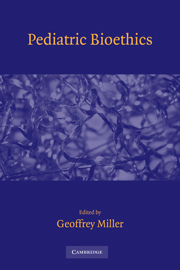Preface
Published online by Cambridge University Press: 07 May 2010
Summary
I cannot really define what is meant by the term “bioethics.” It seems to mean different things to different people, depending on their situation and perspective. I do appreciate that it encompasses more than norms and codes of conduct for health professionals. Its sources are many and include the heterogeneous tentacles of moral philosophy; the instinctual nature of cultural norms; the development and wrangling compositions of common and statutory law; and lessons from history, the humanities, the social sciences, and the study of human nature. With such broad and variable origins, it is not surprising that the questions that concern bioethics give rise to such vigorous debate, for they entail the age-old arguments about how we might treat each other as individuals, as special or privileged persons, as groups, and within a state, and how these things should be prescribed and proscribed. Underlying all of this is the recognition and government of harmful behavior, potential or otherwise, that has been, is, and evidently will be practiced by human beings, often with the participation of health professionals in clinical and academic medicine. At particular risk from this harm are vulnerable populations such as children. This book presents approaches to this concern that arise in pediatric bioethics. The contributors represent the fields of philosophy, medicine, law, and the social sciences. A broad array of topics is addressed, including theory and principles, genetics and the newborn, therapies, and end-of-life issues. The intention is that from these contributions the reader will be able to derive a good ethical approach to the practice of pediatrics and avoid poorly reasoned responses to ethical questions – responses that are cloaked in misinterpreted word and fashionable phrase.
- Type
- Chapter
- Information
- Pediatric Bioethics , pp. xiii - xivPublisher: Cambridge University PressPrint publication year: 2009

